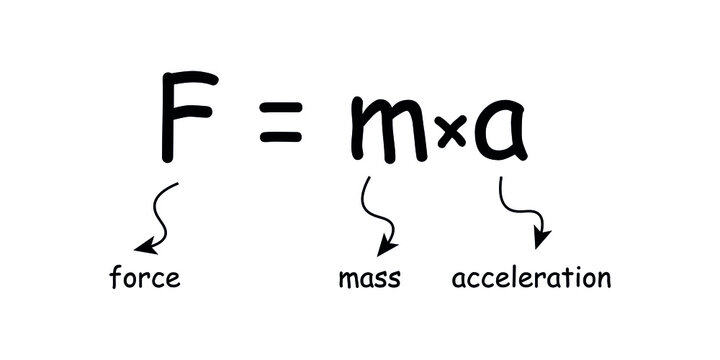Newton 2nd law of motion: Unveiling the Dynamics of Force and Acceleration Isaac Newton’s laws of motion have been foundational principles in physics for centuries, providing a robust framework to understand the dynamics of objects in motion.
Among these laws, the second law stands out as a cornerstone, revealing the intricate relationship between force, mass, and acceleration. In this exploration, we delve into the profound insights of Newton 2nd law of motion, examining its mathematical formulation, real-world applications, and enduring impact on our comprehension of the physical world.
Newton 2nd law of motion its core
Newton 2nd law of motion succinctly states that the force acting on an object is equal to the mass of that object multiplied by its acceleration. Mathematically expressed as F = ma, where F is the force applied to the object, m is its mass, and a is its acceleration, this law encapsulates the essence of how objects respond to the influence of external forces. Let’s break down the components of this equation to unravel the significance of each.
Force (F): Force, in the context of Newton 2nd law of motion, represents the push or pull exerted on an object.
It is a vector quantity, possessing both magnitude and direction. Force can originate from a variety of sources, such as gravitational attraction, electromagnetic interactions, or mechanical contact between objects.
By measuring the force applied to an object, one gains insights into the intensity of the interaction and the resulting motion it induces.
Mass (m): Mass is a fundamental property of matter, representing the amount of substance in an object. It is scalar and does not change with an object’s location.
Newton 2nd law of motion highlights the crucial role mass plays in determining how an object responds to applied force. Objects with greater mass experience less acceleration under the same force compared to lighter objects.
The interplay between mass and acceleration is a key feature of this law, shaping our understanding of motion across a diverse range of scenarios.
Acceleration (a): Acceleration is a measure of how quickly an object’s velocity changes. It is also a vector quantity, indicating the rate of change of velocity concerning both magnitude and direction. Newton’s Second Law asserts that the acceleration of an object is directly proportional to the force acting upon it and inversely proportional to its mass. This fundamental relationship underlines the dynamic nature of motion, demonstrating that the more force applied or the less mass an object has, the greater its acceleration.
Real-World Applications: The ubiquity of Newton 2nd law of motion is evident in a multitude of real-world applications, ranging from the movement of celestial bodies to the behavior of everyday objects. Consider, for instance, the trajectory of a spacecraft entering Earth’s atmosphere. By applying Newton’s Second Law, scientists can calculate the force required to alter its velocity and guide it to a precise destination. Similarly, automotive engineers leverage these principles to design vehicles that optimize fuel efficiency and ensure passenger safety.
In sports, the law finds application in understanding the mechanics of athletic performance. From the launch of a javelin to the swing of a golf club, the interplay between force, mass, and acceleration dictates the trajectory and outcome. Newton’s Second Law provides coaches and athletes with a quantitative framework to enhance training regimens and improve overall athletic capabilities.
Impact and Legacy: The enduring legacy of Newton 2nd law of motion extends far beyond its immediate applications. The law’s mathematical elegance and empirical validity have made it a cornerstone in the development of classical mechanics. Its principles laid the groundwork for subsequent advancements in physics, paving the way for the formulation of more comprehensive theories, such as Albert Einstein’s theory of relativity.
Newton’s Second Law remains a fundamental tool for scientists and engineers, guiding research and technological innovations. From space exploration to the design of everyday machinery, the law’s principles continue to shape our understanding of the physical world and drive advancements in various fields.
In conclusion, Newton’s Second Law of Motion stands as a testament to the power of scientific inquiry and mathematical rigor. Its elucidation of the intricate relationship between force, mass, and acceleration has transcended time, leaving an indelible mark on the foundations of physics. As we continue to explore the complexities of motion and dynamics, Newton 2nd law of motion remains an indispensable guide, unraveling the mysteries of the physical universe.
For More information visit web :-https://xeidea.com/
And news website:- https://lokprasang.com/

